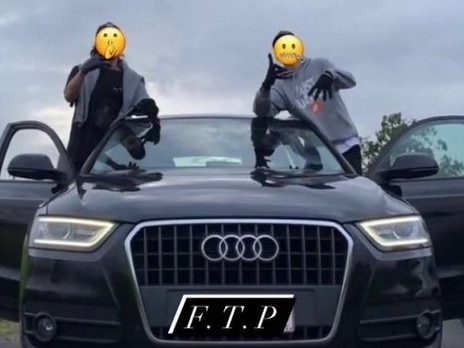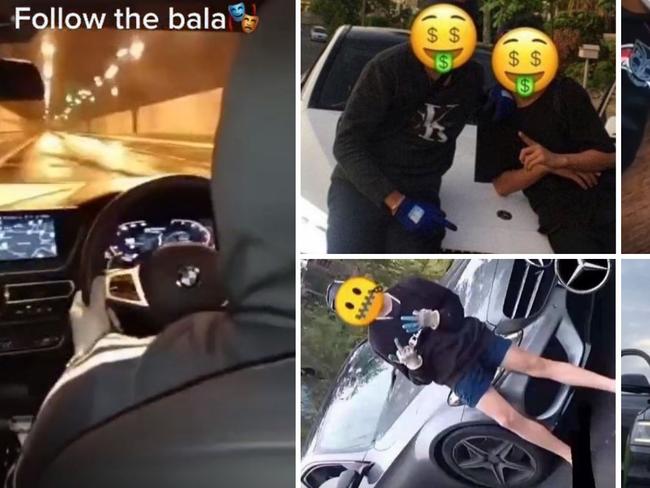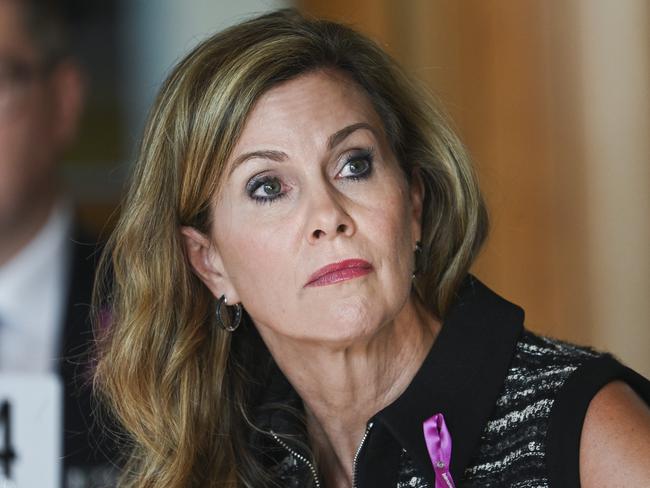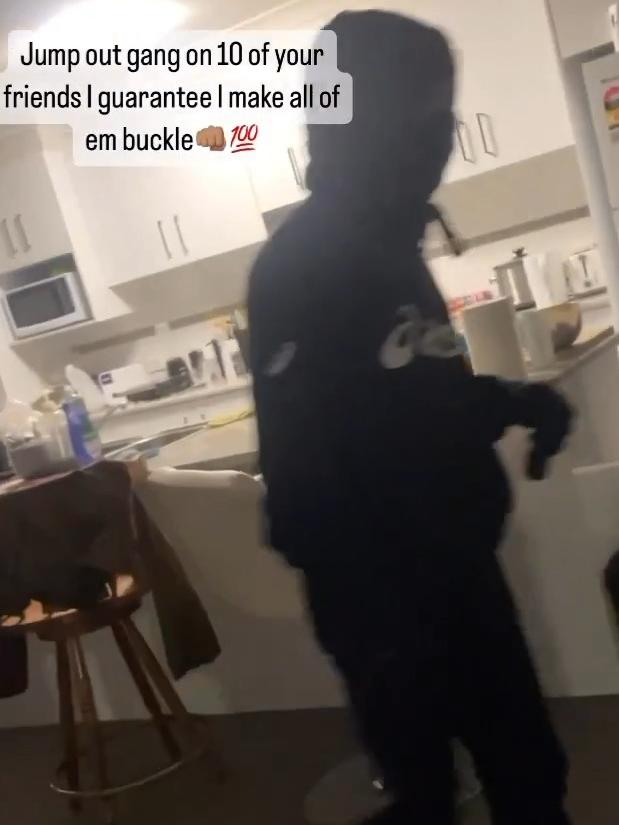Violent criminal videos left online as Instagram, TikTok drive youth crime epidemic
Videos of Aussie kids stealing cars, doing drugs and breaking into homes are not being removed from social media, despite breaching the rules of Meta and TikTok. Experts say it is inflaming a youth crime crisis.
News
Don't miss out on the headlines from News. Followed categories will be added to My News.
Violent videos of Australian children stealing cars, doing drugs and breaking into homes are not being removed from social media despite clearly breaching the platform’s guidelines and amplifying the nation’s youth crime epidemic.
The Daily Telegraph can reveal that content shared by child gangs on social media — depicting a range of crimes — have remained online for more than a year.
The Telegraph has sighted several examples including one TikTok video showing a young boy speeding with the police chasing them captioned “too slow” from March last year.
Another video on Instagram showed a break-and-enter from December 17, 2023.
A third video from a Queensland account that was posted in September 2022 showed kids speeding at 260km/h through a tunnel.

Some accounts also re-posted the news covering their crimes with frustrated experts blaming the social media giants for the escalating youth violence epidemic.
A TikTok spokesman said videos brought to their attention by the Telegraph had been removed or were in the process of being removed.
“We do not allow content that promotes criminal activities, and work closely with law enforcement agencies around Australia.”
A Meta spokesperson said company policies “clearly prohibit people from engaging in criminal activity or publicising crime”.
Police sources warned they have witnessed an escalation of children filming themselves entering homes to steal keys, often filming victims in the house while they are asleep.
They added that regional youth gangs were trying to emulate serious criminal gangs in the city by trying to steal more expensive cars including BMWs and Audis.

Opposition communications spokesman David Coleman took a swipe at existing laws that do not compel technology companies to remove dangerous content — vowing their proposed new bill will give the eSafety Commissioner stronger powers to take the content down.
“Our bill allows the eSafety commissioner to demand that these videos are removed and if the tech platforms don’t remove those videos, they face fines of $156,000,” he said.
“The eSafety Commissioner does fantastic work and we want to give the commissioner very clear power to deal with this huge problem in our community.
“We can’t just rely on TikTok and Meta enforcing their own rules. For instance, there are many children who are not meant to be on the platforms at all under the social media company’s rules but who are. We definitely can’t rely on the platforms to do the right thing.”
A spokeswoman for eSafety Commissioner Julie Inman Grant outlined the convoluted process required to take down criminal content under current laws.

“eSafety does not proactively monitor the internet for seriously harmful or illegal content. We rely on members of the public to report it,” she said.
“Under the Online Safety Act 2021, material promoting, inciting or instructing in matters of crime and violence may be considered ‘class one’ material.
“The eSafety Commissioner may be able to require the removal of class one material.”
The spokesman said the Commissioner had to go through an individual assessment of each potential class one material before they can have it removed.


Communication Minister Michelle Rowland said eSafety “can and does get this material taken down” if social platforms don’t respond.
“The Online Safety Act already provides the eSafety Commissioner with broad powers to order the removal of material that promotes, incites or instructs people in crime or violence,” she said.
“The Government has brought forward the statutory review of the Online Safety Act to ensure the eSafety Commissioner has the tools necessary to keep Australians safe.”
Child psychologist Professor Adam Guastella said social media popularity was the biggest driver for youth crime.
“We know as children develop, teens become really focused on peer recognition as a driver for behaviour,” he said.

“Getting their videos online and being lauded by their peers would be a massive motivation for this time of risk taking.”
Not-for-profit Reset Australia is calling for a two-pronged approach where problematic videos are taken down by social media platforms but the algorithms are also designed in a way that prevent such videos from going viral in the first place.
Executive Director Alice Dawkins said algorithms were “stoking the fire” by making criminal videos do well on social media.
“If you only focus on taking down individual pieces of content it leaves you with a whack-a-mole problem,” she said.
She said laws could be used to “incentivise” tech giants to ensure criminal content “isn’t going viral”.
Do you have a story for The Daily Telegraph? Message 0481 056 618 or email tips@dailytelegraph.com.au




